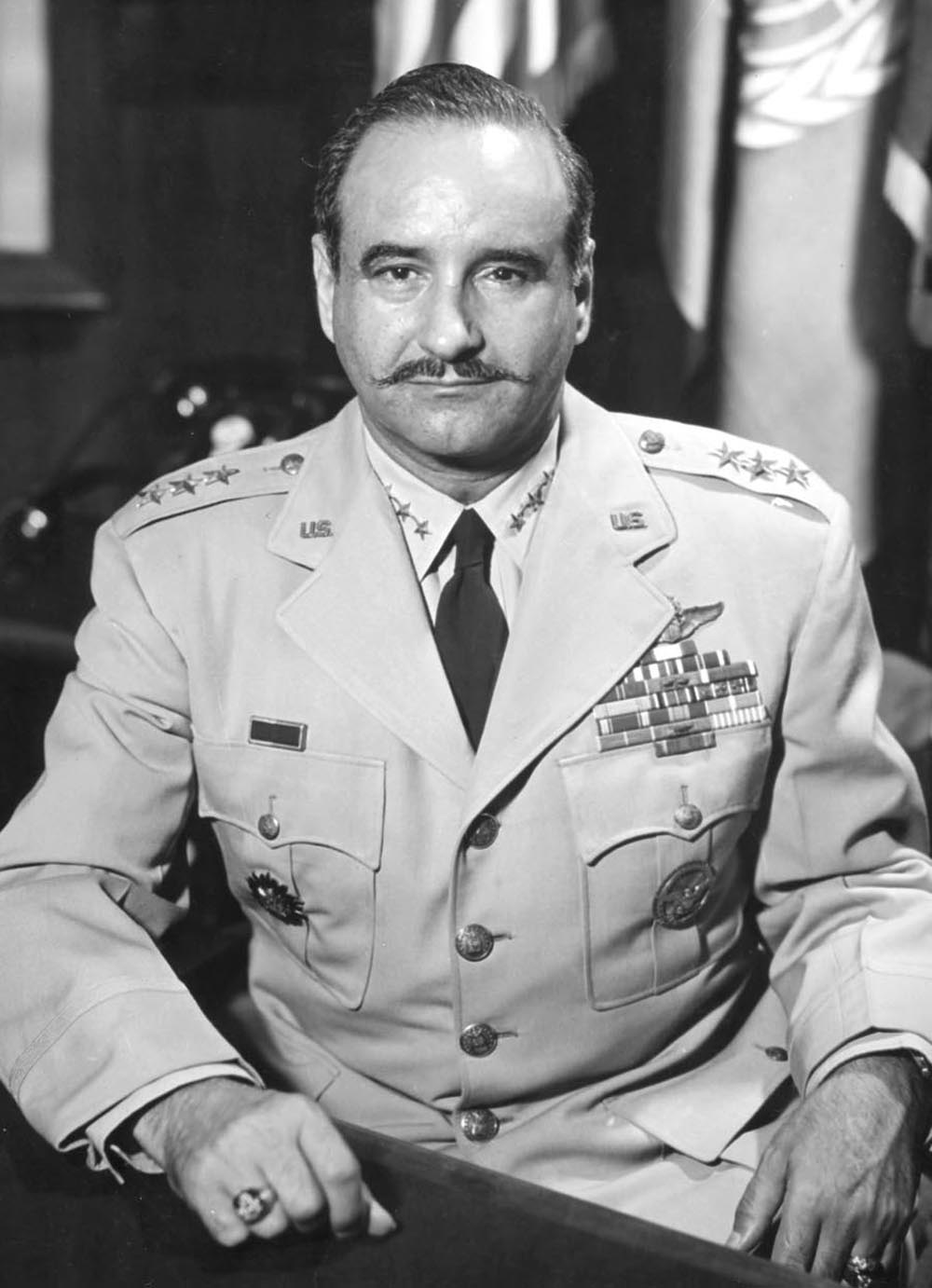
Lieutenant General Elmer J. Rogers, Jr.
October 12, 1903 - June 30, 2002
Elmer Joseph Rogers Jr., was born at Taunton, Massachusetts, in 1903. Graduating from high school at Quincy, Massachusetts, in 1920, he attended Emerson Institute and later studied at Harvard University.
Appointed a flying cadet in March 1924, General Rogers entered Primary Flying School at Brooks Field, Texas, graduated from Advanced Flying School at Kelly Field, Texas on March 14, 1925 and was commissioned a second 1ieutenant in the Air Service Reserve. On June 30, 1926 he received his regular commission as a second lieutenant of Air Corps.
Assigned as a squadron adjutant, a year later General Rogers became a flying instructor at Brooks and Kelly fields, successively. Entering the Air Corps Technical School at Chanute Field, Ill., in September 1932, the general graduated the following June.
Going to Hawaii, General Rogers served with the Fourth Observation Squadron at Luke Field, and in June 1935 was transferred to the 18th Composite Ting at Fort Shafter. The following April he went to Barksdale Field, Louisiana., for duty with the Third Attack Group.
Graduating from the Air Corps Tactical School in 1939, General Rogers was assigned as an instructor with the Georgia National Guard. Joining the War Department General Staff in August 1941, he was appointed a courier of the Combined Subject Section of the Strategy and Policy Group, War Plans Division, later becoming chief of the section. In January 1943, he moved to Tampa, Fla., as deputy chief of staff of the Third Air Force.
The following August General Rogers assumed command of the 465th Bomb Group at McCook Field, Nebraska, taking it to the Mediterranean Theater in February of 1944. On March 2 he was wounded in action and hospitalized. Released from the hospital on May 14, 1944, the general was named commanding officer of the 97th Bomb Group in that theater. In August he became deputy assistant chief of staff for operations of the Fifteenth Air Force and two months later was appointed assistant chief of staff for operations of the Mediterranean Allied Strategic Air Force; this latter assignment was in addition to a corresponding position he already occupied in the Fifteenth Air Force. In June 1945, General Rogers became the chief of Staff of the Fifteenth Air Force and assumed command of that organization September 1, 1945.
Returning to the United States, General Rogers joined the Air Force headquarters at Washington, D.C., in December 1945 as chief of the Policy Division in the Office of the Assistant Chief of Air Staff for Plans. Entering the National War College at Washington, D.C., in August 1947, he graduated the next June and was assigned to the Alaskan Command at Fort Richardson, Alaska to become director of plans and operations. Hospitalized in November 1948, General Rogers returned the following May to the Alaskan Command in the same capacity, remaining there until December 1950.
In December, the General became the Air Force member on the Joint Strategic Survey Committee, Office of the Joint Chiefs of Staff in Washington, D.C.
In September 1953, General Rogers was appointed operations officer of the Far East Command at Tokyo, Japan and on July 15, 1954 was named deputy chief of staff for plans of the Far East Command. He was designated chief of staff, Far East Command and United Nations Command April 26, 1955.
His decorations include the Distinguished Service Medal, Silver Star, Legion of Merit, Distinguished Flying Cross, Bronze Star, Air Medal with two oak leaf clusters, Purple Heart, Presidential Unit Citation, and European Theater Medal with eight battle stars. His foreign decorations include the Officer of the Most Excellent Order of the British Empire, Croix de Guerre with Palm (French), Pilots Citation, Royal Yugoslavian Air Force, the Order of the White Elephant, 2nd Class (Thailand), the Ulchi Distinguished Military Service Medal with Gold Star (Republic of Korea), the Order of the Rising Sun (Japan), and the Military Order of Taeguk (Korea). These later two decorations are still subject to Congressional approval. He is rated a command pilot, combat and aircraft observer.